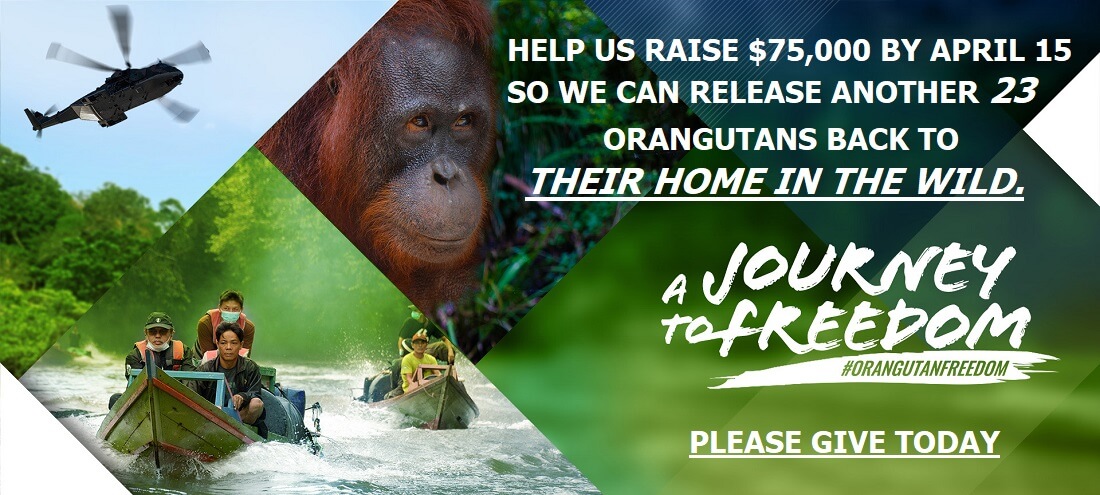Jungle looks
We have stunning new images right out of the Bornean rainforest for you. These snapshots are not just valuable insights into the life of our released orangutans, they are also evidence of the abundance of species that live in our reintroduction sites.
Whilst COVID-19 has impacted great ape conservation and research projects across their range states, the BOS Foundation team has been able to continue to safely gather data on our reintroduced orangutans. One of the new non-invasive methods we have been trialling in the Bukit Batikap Protection Forest is the use of camera traps. They allow our team to record data remotely.
For this pilot study, we are working together with partners from the University of British Columbia’s (UBC) Wildlife Coexistence Lab and the Bogor Agricultural University (Institut Pertanian Bogor). Our goal is to investigate how our released orangutans have arranged themselves throughout the forest, their current density and their longer-term survival success.

While this is the first time we have used camera traps in our reintroduction sites, we don’t know yet if we will be able to answer all of our questions. However, we do know that non-invasive tools are critical to limit potential contact between orangutans and humans and, therefore, reduce the risk of transmitting diseases. They also minimise the chances of scientists disturbing wildlife in their research areas.
The first results from the study look promising. “If the camera traps prove to be a useful, cost-effective tool, we may continue to use them in the long-term”, says Jacqui Sunderland-Groves, BOS Advisor and Research Scientist at UBC. Since the battery life of the radio tracking devices we use expires at some point, camera traps are a great alternative to monitor released orangutans for a longer period of time. “Much depends on our ability to gather sufficient data and on the orangutans’ and other animals’ cooperation in terms of leaving the cameras undisturbed”, Jacqui Sunderland-Groves emphasises.
Particularly reintroduced rehabilitated orangutans can be very curious and keen to check out anything new. As you can imagine, this strong curiosity not only is responsible for some unique ‘selfies’ but also for some broken or repositioned cameras.

Female orangutan ‘Zakia’ is checking out the camera trap.
But as long as the camera traps work well, they provide much more than insights into the life of released orangutans, says the researcher. “There is a plethora of important species in our reintroduction sites, and we hope the cameras will also contribute to our knowledge of other species present and demonstrate the overall importance of these sites for conservation.” Besides others, the cameras caught sun bears, clouded leopards, leopard cats, marbled cats, macaques, white-fronted langurs, bearded pigs, muntjacs and pangolins.
We will keep you updated with more fascinating results from this study. In the meantime, enjoy the amazing images of orangutans and other wildlife species.





